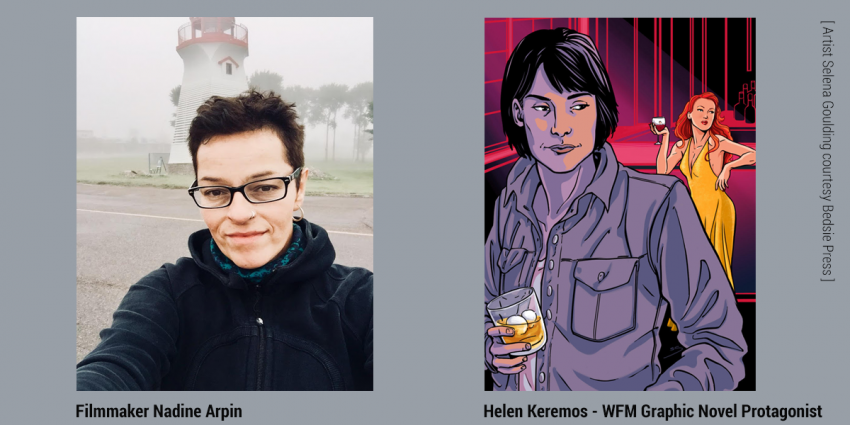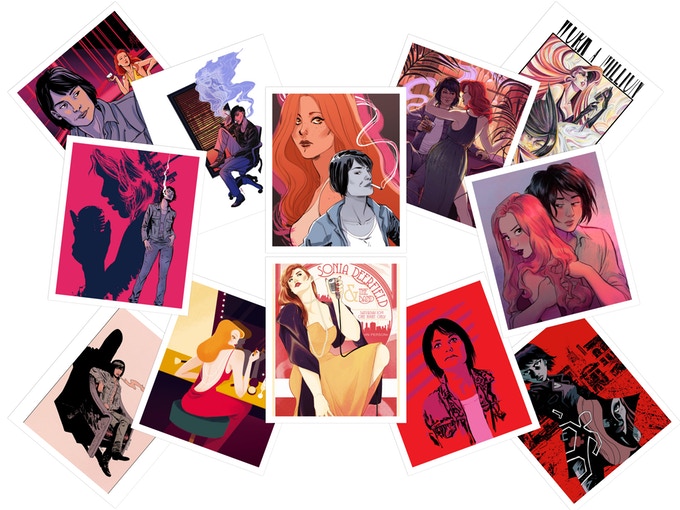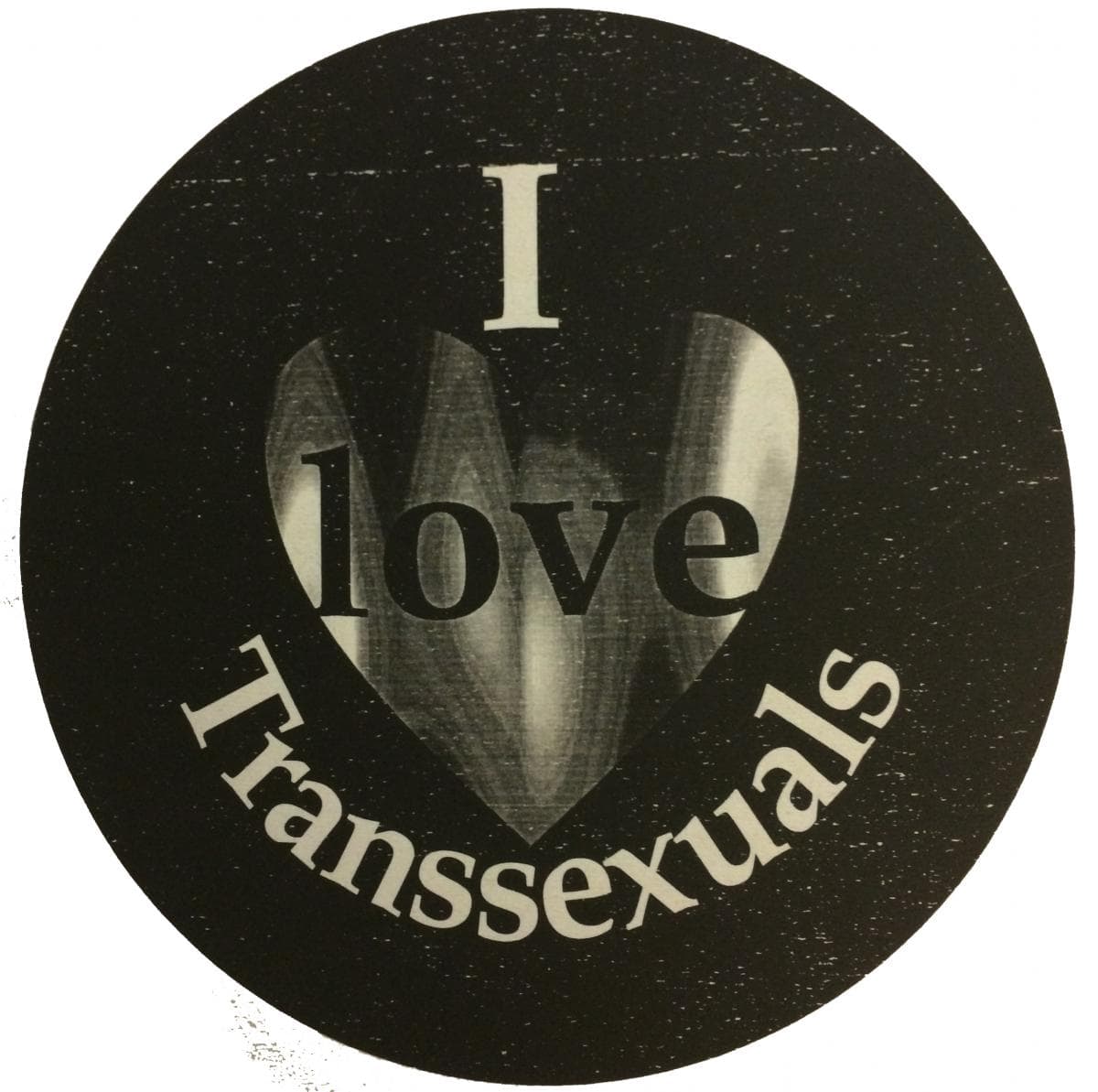
Nadine Arpin, 2 Spirit, Red River, Michif filmmaker living in Sioux Lookout is noted for telling stories that blur the lines between legend, memory and truth, using mix media, found footage and animation to create a hybrid cinematic experience. Her work has been screened at imagineNATIVE, Skabmagovat – indigenous peoples’ film festival, Winnipeg Aboriginal Film Festival, Garifuna International indigenous film festival, and Chicago’s First Nations Film and Video Festival, to name a few. She has been producing short films since 2013 and we met online to discuss her directorial work, with producer Ottie Lockey, on the documentary Eve Zaremba’s Dyke Detective an Origin Story.
Q: Nadine, we would like a little background on how you got involved with the project? Were you familiar with the Helen Keremos Mystery Series?
NA: Ottie and I first met on an Ontario arts Council jury, in 2016. During one of the breaks we went for coffee to discuss our mutual filmmaking practice. At the coffee shop counter Ottie told the server her name was Eve. Intrigued I asked, “who’s Eve?” To which Ottie respond, “Eve Zaremba is my partner, you’ll like her. She’s a writer. She wrote an entire series of crime novels about a Métis, dyke detective. I went home to Sioux Lookout after that week in Toronto and over the next few months and consumed all 6 Helen Keremos mysteries. The following spring, I was in Toronto again, participating in a film development lab through HotDocs, and Ottie and I met up to watch some films together, afterwards, walking from the screening, Ottie revealed to me she had always wanted to turn one of Eve’s books into a full feature screenplay. On the spot I proposed an idea for a documentary about Eve, and the story of how Helen Keremos came to be, a reintroduction of Eve Zaremba’s character to a new generation. The film concept, as it is being written today, has evolved and branched out considerably considerably since that first conversation.
Q: Are you familiar with Bedside Press and Hope Nicholson’s work?
NA: I was recently introduced to Bedside Press through the graphic novel development of Work for a Million. Hope Nicholson is a mover and a shaker. I find her work to be very impressive. I have not met her in person yet.
Q: How do you see Helen Keremos as a character?
NA: I met Eve Zaremba before I read my first Keremos mystery. I couldn’t help but project Eve’s dynamic and confident personality onto my understanding of the Keremos’s persona. It is not so much that they resemble one another physically but rather that Zaremba and Keremos share the same to-the-point intelligence and wit. Although Eve herself will scoff at the suggestion that Helen is an extension of herself.
Q: Was Keremos she rendered into an archetype for you by Zaremba? And what was your connection with the character?
Can you tell us about your documentary?
NA: Eve constructed a private detective who was a perfect archetype of the crime mystery genre, aside from the fact that she is a dyke and of mixed Indigenous heritage. I identify as a 2 Spirit, Red River Michif. I can count on one hand the number of fictional characters who fit that bill. Having lost a friend to violence where no justice was served in my own town, it left me feeling powerless. At this same time, I began reading the Keremos mysteries and thinking about how I could change this narrative of violence; if only in a fictional context. This was when I proposed to Eve the idea of writing a new mystery story drawing from true circumstances but set in a fictional context. In this new story I suggested that Keremos would work with a character from Northwestern Ontario to solve a murder mystery. The documentary is essentially an exploration of this idea.
Q: What is the format, what is the style? And how long is it?
NA: This film will be a hybrid bio-pic crossed with a road trip. Comic book style animation will be worked through the film when exploring aspects of the Keremos character. The film will be set to an original Jazz fusion soundtrack. This is a short film and is intended to reintroduce the Keremos character to a new LGBT2Q+ audience and acknowledge the pioneering work of Eve Zaremba. It’s 15 minutes long, and I know, you’re thinking, “This is a tall order for such a short film!”. I see this documentary as the prelude to a much bigger story currently in the works.

Q: What is the camera’s point of view?
NA: The film will follow Eve and Ottie from a hindsight perspective and commentary. Though conversational style interviews with Eve, Ottie and I offer our perspectives of the trip we took to Sioux Lookout in the spring of 2018 when doing development research. It follows Eve’s introduction to key Indigenous members of the community and location orientation.
Q: What is the location and what is its significance?
NA: I admit I believe there is a sort of destiny kind of energy happening around this project. Again, I can sense Eve’s eyes rolling as she reads this, ha! The truth is Eve conceived of her character Helen Keremos while she was driving a van, solo across Canada back in the mid-seventies. She claims the idea of a dyke detective came to her on the Trans-Canada Highway, somewhere between Winnipeg and Thunder Bay. The turn off onto highway #72 to Sioux Lookout is halfway between Winnipeg and Thunder Bay, just sayin’.
Q: And how does it respond to the prose book, the writer and the graphic novel?
NA: The film is not about any one of the novels specifically. The purpose of the film is to shine a glimmer of light on Zaremba’s character, who at that time was groundbreaking in terms of her open lesbian orientation in an apolitical way.
Q: Whose origin story is this documentary about?
Is it the backstory of our protagonist “Helen Keremos”? Or, is the graphic novel itself the protagonist of the origin story?
NA: For our purposes we tell the story of how Helen Keremos came to be, and provide a glimpse into her character. Keremos does not have superhuman capabilities. She is in fact not a superhero but a character who, in her own way, achieves superhuman results through intelligent pragmatism.
Q: Do you make the connection in your documentary between Zaremba’s creation of the Helen Keremos and her own elevation as a key protagonists/superhero in the story of Canada’s Queer liberation movement?
NA: This is certainly how I view Eve’s many achievements. It is my sincere hope that this documentary contributes in its way by introducing a new generation of LGBT2Q+ and crime mystery lovers to one of Canada’s unsung heroes of the early feminist movement. The documentary is a second chance to take a look at this street smart, private detective whose adventures are as relevant today as they were 35 years ago.

